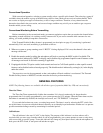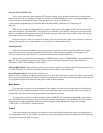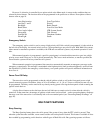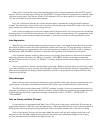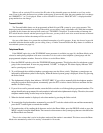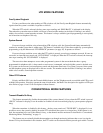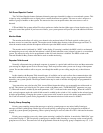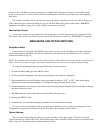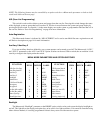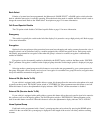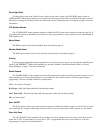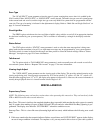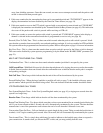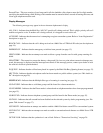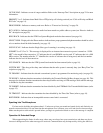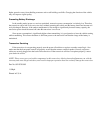Scan Type
The “SCAN SELCT” menu parameter selects the type of system scanning that occurs when it is enabled by the
SCAN switch. Either “MULTI- SITE” or “SNGLE-SITE” can be selected. The multi-site type scans all system/groups
in the current bank and scan list, and the single-site type scans only Multi-Net systems that are programmed with the
same site. The type of scanning is indicated in the alphanumeric display. Refer to “Multi-Site and Single-Site Scan” on
page 11 for more information.
Siren/Light Bar
The SIREN option switch turns the siren and lights of public safety vehicles on and off (if an appropriate interface
box has been installed by your system operator). The on condition is indicated by a triangle in the display under the
switch.
Status Select
The STAT option switch or “STATUS” menu parameter is used to select the status message that is being trans-
mitted each time the transmitter is keyed. Up to eight status messages may be programmed by your system operator.
The Select switch is rotated to display the messages and then pressed to select the desired message. Refer to “Status
Messages” description on page 14 for more information.
Talk-Around
The TA option switch or “TALKAROUND” menu parameter is used to manually turn talk- around on and off on
conventional systems. Refer to “Repeater Talk-Around” on page 17 for more information.
Viewing Angle Adjust
The “VIEW ADJST” menu parameter sets the viewing angle of the display. This provides optimal intensity at the
viewing angle being used. Viewing angles represented by 0-15 can be selected. “0” selects -45
° and “15” selects +45°.
Note that when toggling from “15” to “0”, the display may appear to indicate all 8's. However, the correct information is
actually being displayed when it is viewed from the selected angle of -45
°.
MISCELLANEOUS
Supervisory Tones
NOTE: The following tones are heard at various times when operating this transceiver. They are heard only in the
LTR or Multi-Net mode unless noted otherwise.
Busy Tone - This tone is similar to the standard telephone busy tone and it indicates that the radio system is currently
busy. It sounds when making all types of Multi-Net and LTR calls and also when Multi-Net Busy Queuing is pro-
grammed. The display also indicates “SYSTEM BSY” when this condition occurs.
Intercept Tone - This is a siren-like tone (alternating high and low tones) which indicates the following error condi-
tions:
• If this tone sounds after the transmit indicator flashes several times and “OUT-OF-RNG” appears in the display,
an out-of-range condition is indicated. To complete a call, you may need to drive closer to your radio system or



